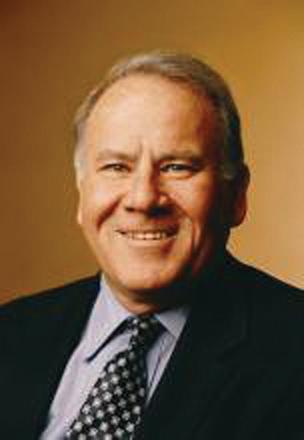A CEO who played a central role in the failure of a mortgageCUSO that led to more than $46 million in losses for 17 creditunions was sentenced to one year and a day in federal prisonTuesday.
|Richard E. Jungen, 67, pleaded guilty in October 2014 to onecount of obstruction of justice stemming from a FBI investigationover a document that Jungen admitted he falsified to pay more than$9 million to the inside investors of the Central States Mortgage Co. He was also ordered by U.S.District Court Judge Lynn Adelman in Milwaukee to pay restitutionof $175,000.
|To no avail, Katherine C. Polich, a Madison-based attorneyrepresenting 13 credit unions, urged Judge Adelman to sentenceJungen to the maximum allowable term and pay the fullest amount ofrestitution allowed by law to his victims. All of the victim creditunions are based in Wisconsin except for one in Illinois and one inMinnesota.
|
In exchange for Jungen's guilty plea, federal prosecutors agreedto drop three counts of fraud and other charges, according to theplea deal.
|On behalf of the credit unions, Polich opposed the terms of theplea agreement.
|“It is difficult for the credit unions to understand why thegovernment is content to allow defendant Jungen to plead guilty toa single count of obstruction of justice when there appears to beample evidence supporting the charges in the indictment,” Polichwrote in a December 2014 letter to the judge.
|She also wrote that given the gravity of the crimes and the harmthey caused, the plea agreement failed to hold Jungen accountablefor his conduct. Polich also asked the judge to freeze Jungen'sreal estate assets worth more than $1.5 million, but thedisposition of those assets was not addressed in the pleaagreement.
|Polich said Wednesday the credit unions did not want to commentabout Jungen's sentence.
|Because he feared that the negative audit review by state andfederal regulators in June 2008 would cause the CSMC board to fire him, Jungen ordered the liquidation of $9.2million private investment pool called P55, which consisted offamily members, close friend and business associates, according tocourt documents.
|Polich said the CUSO credit unions were not aware of the P-55investment pool.
||Jungen knew that the board would not approve the $9.2 millioncash out to these inside investors because CSMC was performingpoorly and in severe financial distress, federal prosecutors saidin court papers. For this reason, Jungen approached his long-timefriend, business partner and fellow P-55 investor to draft aliquidation letter and back date it to February 6, 2008 in to orderto make the June 25, 2008 liquidation appear to be a normalbusiness transaction.
|Jungen admitted that the backdated letter was created to falselyindicate that more than 90 days written notice was given to CSMCfor liquidation of participation pool P-55 for certain investors,according to court documents.
|Jungen resigned shortly after the $9.2 million cash payoutwas made. In March 2009, CSMC closed its doors, went intoreceivership and was liquidated at the end of 2009 and in early2010.
|Federal prosecutors said while CSMC was failing, Jungen used hisinsider position to protect and enrich himself and his friends atthe expense of the credit unions who placed their trust in him.
|Since its inception in 1997, CSMC was jointly owned by a numberof credit unions and a few individual shareholders, includingJungen. The credit unions owned a majority of CSMC stock witha percentage ownership that reached a high of 78%. The CUSOoriginated, purchased and sold mortgages, many of which were forresidential properties throughout Wisconsin and Illinois.
|In addition to the stock ownership, the credit unions made fundsavailable to CSMC. The CUSO used those credit union funds and setup loan participation pools to originate mortgage loans. CSMC wouldhold the loans for a short time until they were sold in thesecondary market. Upon sale, each participating credit unionreceived a proportionate share of the interest earn while CSMC heldthe loan.
|The CSMC model was, from the credit unions' perspective, a veryappealing opportunity to offer mortgage origination service totheir members. What's more, the credit unions' involvement in CSMCparticipation loan pools was considered low risk because it wasexpected to short-term and fund only mortgage loans that werepre-sold into the secondary market.
|But starting in 2004 and 2005, CSMC allegedly began engaging inthree types of fraudulent activities, interest rate skimming, loanshuffling and payment guaranty and pool stuffing fraud, whichdiverted funds to insiders and away from member credit unioninvestors, according Melvin E. Gavron, a forensic accountingexpert. He was hired by the CUSO's credit unions to analyze CSMC 'sbusiness and accounting practices.
|CSMC's related party, Interim Funding LLC, was engaged as theservicer for most if not all of the loans included in theparticipation loan pools. The credit unions, however, did not knowthe existence of Interim Funding LLC. He also found thesefraudulent activities enriched the investors of Interim FundingLLC. Jungen was one of six.
|In the alleged payment guaranty and pool stuffing fraud, Gavronfound that the P55 investment pool, unknown to credit unioninvestors, contained (subprime) loans that were generally too riskyto qualify to include in the credit union participation loan pools. Although these riskier loans generated high returns when theyperformed, over time, many of the loans became non-performing andfor other reasons could not be sold into the secondary mortgagemarket.
|What's more, even though many of these P55 pool loans were notperforming, investors in the pool were paid high rates of interestas if all of the loans were performing, which meant the P55investors were guaranteed to receive contractual mortgage paymentsamounts whether or not payment amounts were actually realized,according to Gavron.
|To fund these payments to the P55 pool investors, CSMC usedsecured bank lines of credit and its own balance sheet liquidity.The CUSO also continued to originate subprime loans hoping togenerate enough income to keep the P55 pool payment guaranty schemegoing,
|However, just prior to the failure of CSMC, management shiftedthe bad loans out of P55 pool and into the credit union loan poolsand paid off the P55 investors. The credit unions, however, lostmillions.
|“As a result of the liquidation of the P-55 pool and CSMC'ssubsequent demise, the credit unions sustained damages ranging froma minimum of $5,115.507 (P-55 losses only) to a maximum of$46,151,121 (all CSMC) related losses,” Polich wrote in letter toJudge Adelman, just four days before Jungen's sentencinghearing.
|In addition, she noted, fourcredit unions LifeTime, First Security, Federated and Sunrisewere forced to merge out of business as a result of the lossessustained through CSMC.
|“Mr. Jungen's conduct has financially endangered and weakenedcredit unions throughout southern Wisconsin,” Polich wrote. “Jobshave been lost and services to consumers impaired. Credit unionmembers, employees, and the volunteers who serve on credit unionboards throughout the region have been cleaning up the mess leftbehind for years.”
|The existing credit unions that were CSMC investors include the$46 million Aurora Credit Union in Milwaukee, the $28 millionEnterprise Credit Union in Brookfield, the $14 million First CreditUnion in Oak Creek, the $40 million Focus Credit Union, the $97million Glacier Hills Credit Union in West Bend, the $236 millionGuardian Credit Union in West Milwaukee, the $2.6 billion LandmarkCredit Union in New Berlin, the $24 million MCU Financial CenterCredit Union in Mount Pleasant, the $109 million Prime FinancialCredit Union in Cudahy, the $29 million Sherwin Williams EmployeeCredit Union in South Holland, Ill., the $18 million SouthshoreCredit Union in Cudahy, the $2 billion Summit Credit Union inMadison and the $963 million Trustone Financial Federal CreditUnion in Plymouth, Minn.
Complete your profile to continue reading and get FREE access to CUTimes.com, part of your ALM digital membership.
Your access to unlimited CUTimes.com content isn’t changing.
Once you are an ALM digital member, you’ll receive:
- Critical CUTimes.com information including comprehensive product and service provider listings via the Marketplace Directory, CU Careers, resources from industry leaders, webcasts, and breaking news, analysis and more with our informative Newsletters.
- Exclusive discounts on ALM and CU Times events.
- Access to other award-winning ALM websites including Law.com and GlobeSt.com.
Already have an account? Sign In
© 2024 ALM Global, LLC, All Rights Reserved. Request academic re-use from www.copyright.com. All other uses, submit a request to [email protected]. For more information visit Asset & Logo Licensing.









